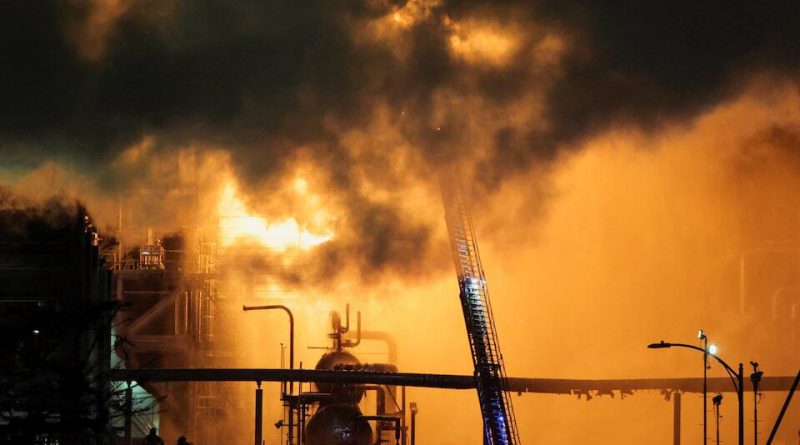Turning Crisis Into Progress: How U.S. Refinery Fires Are Driving a New Era of Safety and Sustainability
A refinery fire sparks not just concern, but a stronger push for safety, resilience, and innovation in America’s energy sector.
When flames broke out at Chevron’s El Segundo refinery in California, the images of smoke against the blue sky reminded many of the risks tied to America’s vast energy network. Yet behind the headlines, the story is not just one of fire and disruption—it is about transformation, investment, and a renewed commitment to safety and sustainability in the heart of the U.S. energy sector.
Refineries remain a backbone of America’s economy, supplying fuel to keep cars on the road, planes in the air, and industries running. Each time an incident occurs, companies, regulators, and communities are reminded of both the challenges and the opportunities to strengthen this vital infrastructure. Industry experts note that today’s fires, while disruptive, are happening in an environment where lessons are quickly translated into stricter safety protocols and innovative technologies.
Chevron, one of the world’s largest energy companies, has pledged to learn from the El Segundo event, with an emphasis on preventing future accidents. “Every incident is a chance to improve our systems,” a company spokesperson said, reflecting a broader industry view that setbacks can serve as catalysts for progress. Already, new investment in monitoring systems, automated shutdown technologies, and workforce training is being accelerated across multiple sites.
What makes this moment particularly significant is the convergence of safety with sustainability. The energy transition has often been framed as a shift away from traditional refining, but the reality is more nuanced. Refineries are not vanishing overnight; they are adapting. Many facilities are introducing cleaner fuels, investing in carbon capture, and aligning with national climate goals while ensuring reliability for consumers. This dual focus—safety and sustainability—marks a turning point for the sector.
Community resilience is another part of the story. In areas like El Segundo, local authorities and emergency services responded rapidly, limiting harm and restoring confidence. Such coordination highlights how energy hubs and neighborhoods can work together in the face of sudden challenges. Far from undermining trust, these responses demonstrate the depth of preparedness and the willingness of communities and corporations to collaborate.
Economists point out that the refinery sector remains critical not just for energy supply but also for jobs and regional economies. Incidents like the recent fire underline the importance of reinvestment, which in turn fuels innovation. The U.S. government has been supportive of modernization, offering grants and incentives for upgrades that align with safety, environmental protection, and workforce development. This synergy between public policy and private enterprise is reshaping the refinery landscape into one that is more robust, future-focused, and globally competitive.
Looking beyond California, refineries across Texas, Louisiana, and the Midwest are adopting best practices learned from each incident. Advanced drone inspections, predictive maintenance using artificial intelligence, and real-time emissions monitoring are becoming standard tools. These investments not only reduce risk but also ensure compliance with increasingly stringent regulations, reinforcing the message that safety is non-negotiable.
At the same time, the global market is watching. Investors, supply chain managers, and international partners see how U.S. energy firms respond to adversity. Rather than retreat, the message being sent is one of resilience. Each challenge becomes proof of adaptability, positioning American refineries as leaders in balancing industrial demand with environmental responsibility.
The fire at El Segundo will not be the last incident the industry faces, but its aftermath may well be remembered as another step forward in the evolution of refining. From corporate boardrooms to local firehouses, from government policy desks to the engineers on the ground, the momentum is clear: crises are being met with innovation, and risks are being turned into opportunities.
In the end, America’s refinery network remains more than steel towers and storage tanks. It is a living system—constantly adapting, learning, and improving. The recent headlines may have focused on smoke and fire, but the longer story is one of progress. And in that progress lies reassurance for communities, confidence for markets, and a stronger, safer energy future.



